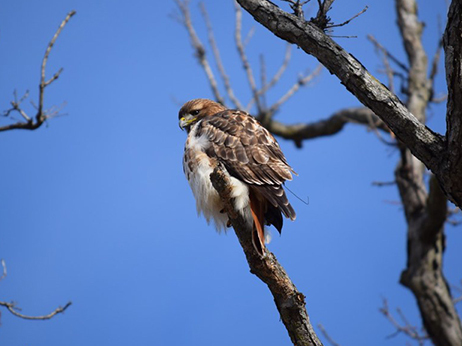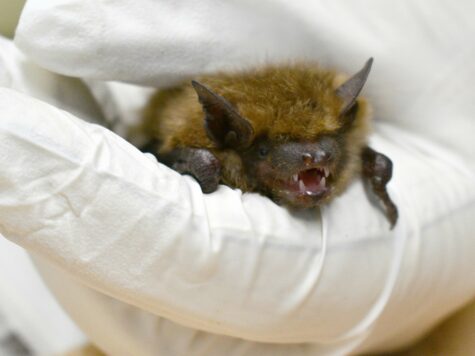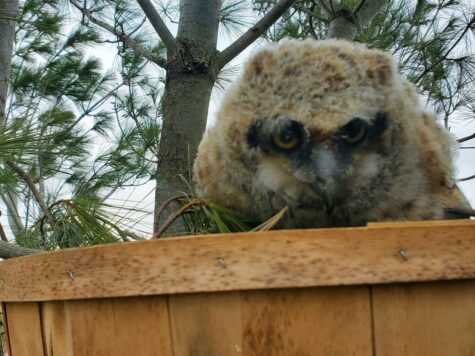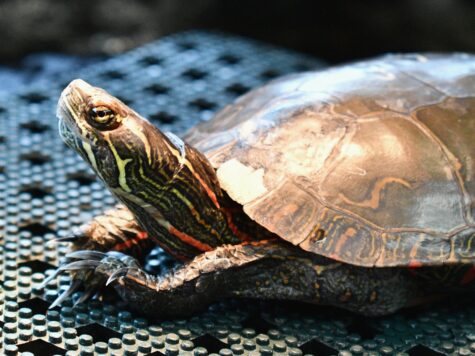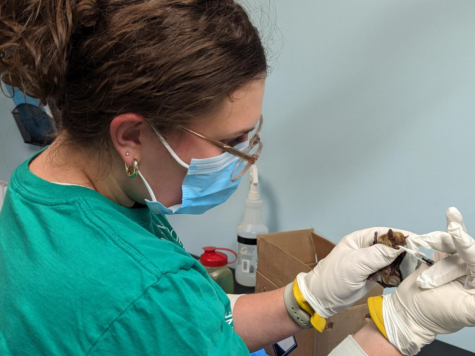The only way to monitor patient success is by marking an animal at release, such as with a band, an ear tag, or tracking device. On rare occasions, avian species marked by the USGS bird banding laboratory may be brought into a center, and the data from their original banding circumstance can be referenced. That kind of information helps verify that rehabilitated patients were able to successfully integrate back into their natural habitats – our highest priority.
In late September 2014, a female Red-Tailed Hawk (RTHA) from Fitchburg, WI was brought to the Wildlife Center unable to fly. She was found not only to have a severely displaced coracoid fracture, but also an infected leg wound. This hawk was in our care until the end of November, having received medications, bandaging and sutures, and physical therapy to ensure that she would be fit to return to the wild. She also was fitted with something extra – a radio-telemetry backpack that allowed us to track her after release. She was one of thirteen red-tailed hawks to be fitted for post-release monitoring between 2014 and 2016, and she has since then been spotted as recently as January 2019!
These red-tailed hawks were fitted with tracking devices as the basis for Wildlife Center staff member Jackie Sandberg’s M.S. dissertation (University of Wisconsin-Madison) for the purpose of researching survival rates and home range of rehabilitated and released red-tailed hawks. With support from her graduate department, the Nelson Institute for Environmental Studies, the Wildlife Center, and several volunteers and interns, Jackie was able to coordinate daily tracking to provide reliable and much-needed data of the health and habitat use of these birds.
As Jackie states in her dissertation, “The ultimate purpose of performing this research on rehabilitated RTHA is to improve rehabilitative practices and maximize the success of post-release individuals. This study establishes a comprehensive framework based on enhanced post-release monitoring of rehabilitated RTHA. Within this model, survival time and rates can be more accurately measured. Estimates of home range, including core areas, can also be made and when paired with behavioral observations, create an improved measure of re-integration success of rehabilitated individuals back into the environment.”
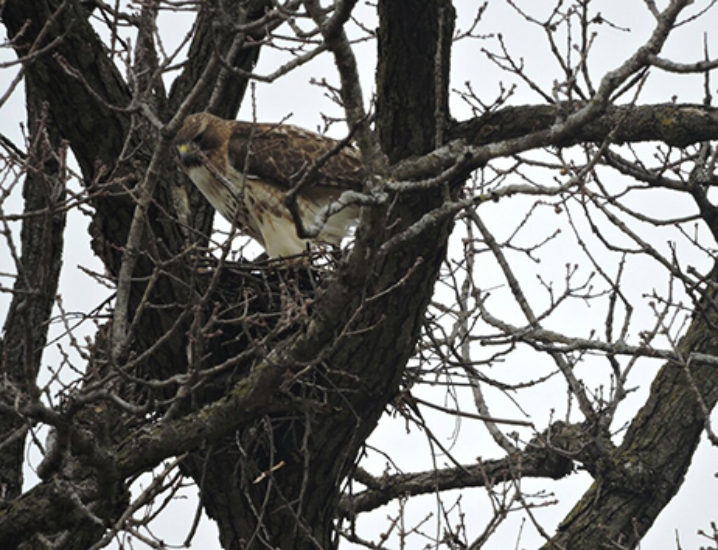
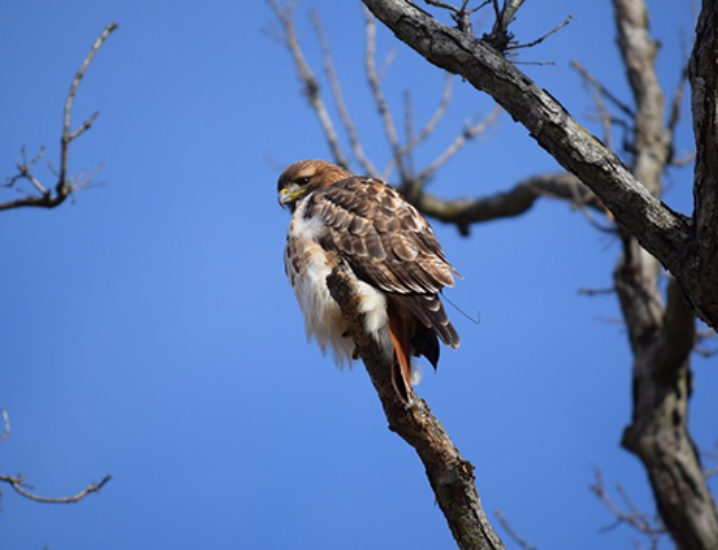
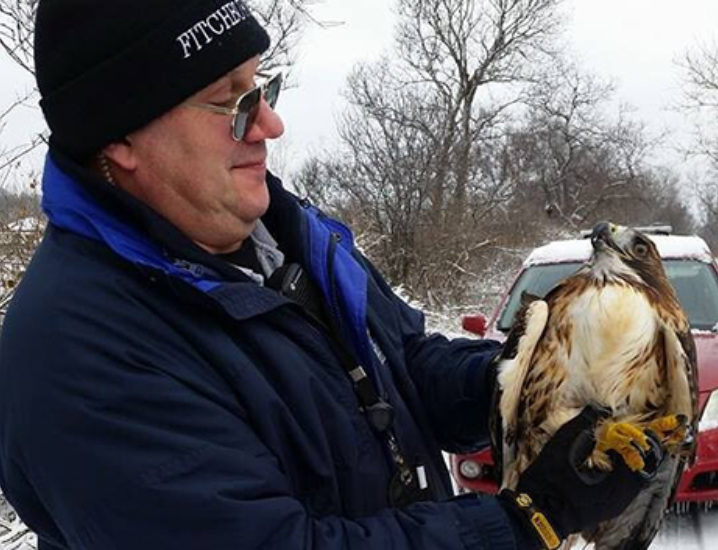
In February 2015, we were surprised when we received a return patient – the same red-tailed hawk that had been treated and released in 2014! This time she was found to be suffering from lethargy, hypothermia, internal infection, and suspected internal trauma. She was successfully treated and released just over a month later for a second time. These circumstances allowed for the Wildlife Center to not only to gain her telemetry data, but much more detailed information from the physical examination and treatment of a previously rehabilitated patient.
When a patient is ready to be released, rehabilitators always make every effort to let them go as near to where they were found as possible, in order to return them to a habitat that they recognize. This is why whenever we receive a new patient, we try to obtain the most detailed information regarding where they were found and the circumstances. This particular red-tailed hawk was released back to her original rescue location where we hypothesized that she already had an established territory! She stayed in that area ever since, suggesting that we were right! Until recently, her tracking device was still active, and so even after Jackie’s dissertation had been completed and presented, she and volunteers continued to keep an eye on “the Fitchburg hawk,” lovingly known by her radio telemetry ID “182”. She was observed hunting, soaring, perching, finding a mate, and nesting over the years. One volunteer even observed two male red-tailed hawks fighting in mid-air as she watched from a nearby telephone pole. Being able to observe a patient thriving after release is something that we rarely get to experience.
Although the battery in her tracking device is no longer working, and we cannot actively track her, we are lucky that she has stayed in the same general area in Fitchburg for the past 5 years and so that we can spot her even without the assistance of radio telemetry. It helps that she not only sports a metal leg band with an ID number, but her radio wire on her tail is visible! In January 2019 a DCHS Wildlife Center volunteer was fortunate to spot two red-tailed hawks perching together and happened to notice that one had a band and a wire – it was 182!
